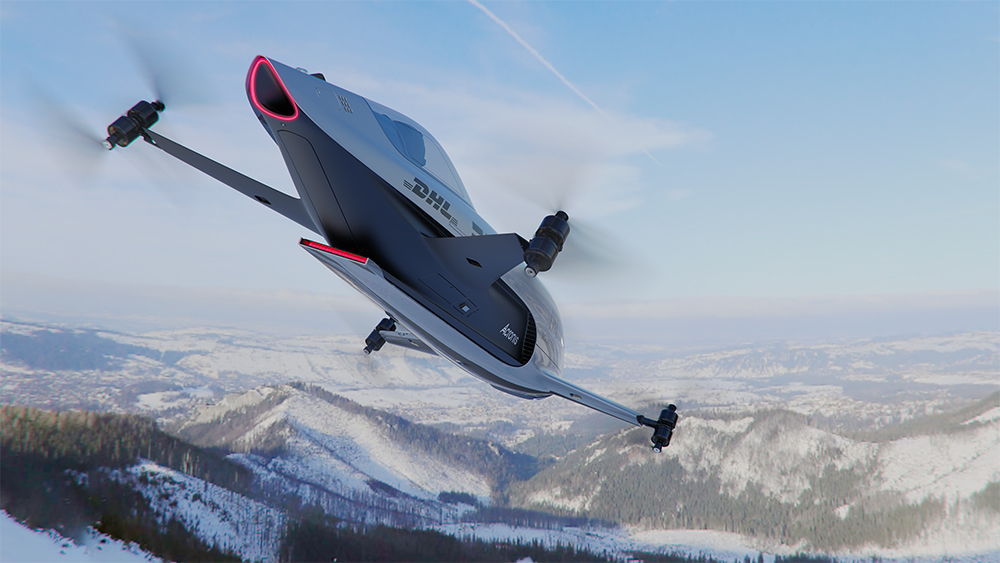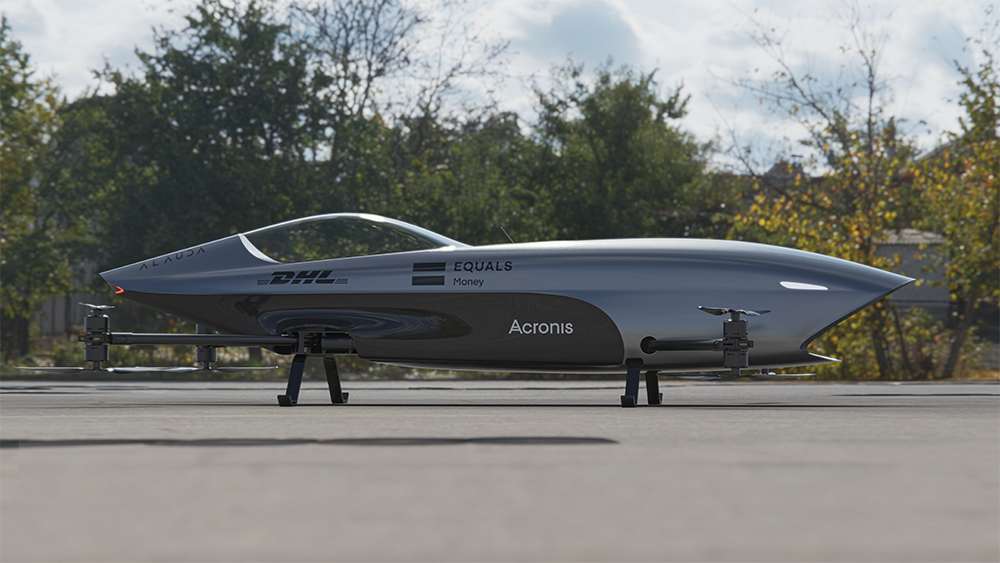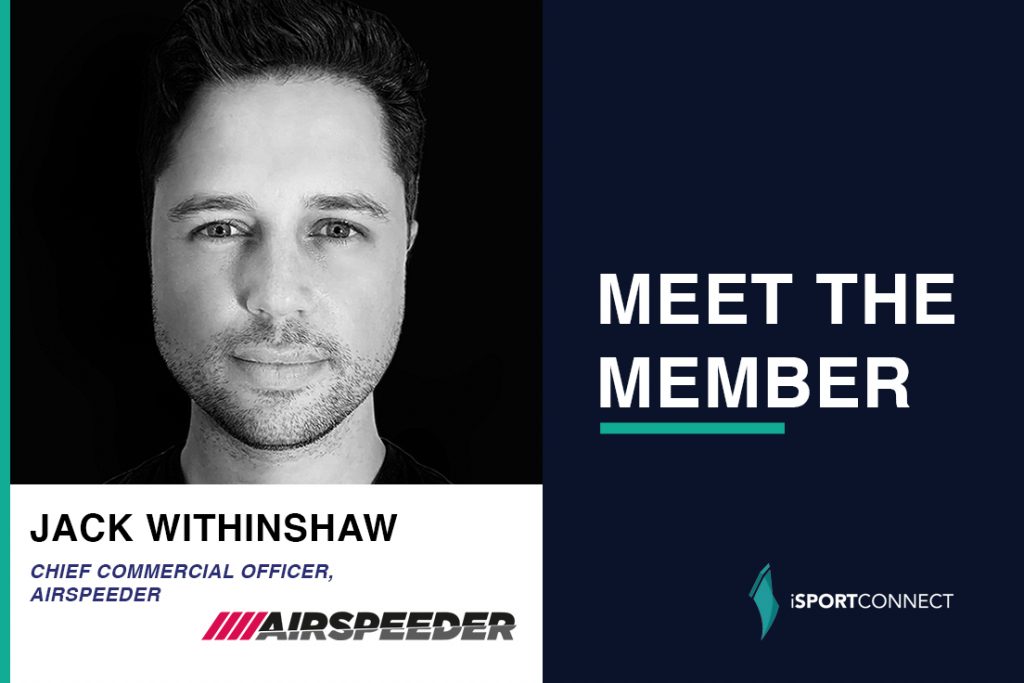“What We’re Trying To Do Is Turbocharge This New Mobility Revolution”
April 13, 2021
Flying cars are a potential invention that has intrigued people for many years, and in our new Meet The Member interview, we take an in-depth look at an all-new air-racing series looking to be leaders in this field, Airspeeder.
Read Jay Stuart’s conversation with Airspeeder’s Chief Commercial Officer Jack Withinshaw, looking at the future of flying cars, what their racing product will look like, having an impact on the future of the industry and much more…
What’s your background Jack, how did you enter this area of motorsport and tech?
So I came from media, working in media agencies and sales as well throughout my whole career, both here in London and in Australia. I joined the company back in 2019, Matt Pearson, our CEO, built a great foundation and a great vision for this sport was going. Being in the UK, I could see a huge opportunity in taking advantage of the commercial base that exists here thanks to entities like Formula One and Formula E for be able to help drive that. So it was early days but I jumped on and helped bring on some amazing partners, some of which are still with us today, and then built out the team that we have in London.
We’ve got two sides of the company. We’ve got Airspeeder which is the sport of that’s headquartered here in the UK, the whole business is run here, and then Alauda the manufacturer that’s in Adelaide, South Australia, that’s where all the vehicles are being manufactured.
So if you use the parallel with the automobile, which people could see starting to come on to roads and into consciousness, where are we with this idea of the flying car and is there a pathway for people to understand the story?
I think there is. Flying cars is something we’ve been promised for years in science fiction, like Chitty Bang Bang, Back To The Future, Star Wars, but we’re only just now on the cusp of when that’s becoming a reality.
“What we’re trying to do is turbocharge this new mobility revolution. As it stands, there’s over 300 flying car companies that have been announced.”
What we’re trying to do is turbocharge this new mobility revolution. As it stands, there’s over 300 flying car companies that have been announced. Not only have the billions of dollars of investment already gone into it, but you also see traditional aerospace movers like Boeing or Airbus being supplanted by more traditionally automotive companies, as they transition from automotive companies. Now you’re seeing Toyota, Daimler, Bosch, Aston, who just announced a 15 year project in the flying car space, as well as many others announce projects. So we’re at the very early stage of this new mobility revolution, it’s just beginning.
We have a vision that one day we’ll be able to be flying across New York, London, Dubai and that it can be a very efficient way of carrying people around. They’ll also be able to alleviate a lot of congestion on the ground, and a lot of cities are starting to plan what that looks like. What we see in the next five to six years, is an opportunity to be able to get the market, and people in the world, excited for what these vehicles can do and we think racing is the medium that’s going to be able to do that.
What can Airspeeder help to provide then and what can the impact be?
Our plan is to show the world what this technology can do and then progress into manned racing or crewed racing, and starting to be able to provide an ecosystem in which that technology can be tested out just as it happened in motorsports. Where technology can be pushed to the limits and new innovations created, whether performance or safety.
From the automotive world and motorsports came disc brakes, ABS revision mirrors, seatbelts, hybrid engines. That all has a trickle-down effect to the mainstream market and we want to be able to produce that ecosystem for flying cars. But more importantly I think this conversation shows that the public aren’t really aware where we’re at technologically with flying cars.
Sport as a medium, as a nice bite-sized format to be able to hit all demographics, young and old, get them excited, get them to fall in love with what the technology can do. And that’s the way that a mobility revolution can get started. It isn’t with a flying taxi, it’s with something that’s exciting with heroes that are in that vehicle, showing the way forward. It’s what worked Henry Ford, Renault, It’s what worked for Charles Rolls of Rolls-Royce, these are still names that we have today, because they were there at the very beginning of the racing revolution.
So this is fully electronic technology?
Yes, that’s correct. In the market they are looking at electric hybrids and there’s whispers in the distant future of hydrogen, but the moment predominantly electric.
Then in terms of the Airspeeder series, what will the competition format look like and how is that going to work?
In terms of what the format looks like for the manned series of the future, where we want to get to is multiple vehicles all on the track in remote locations and not over urban environments. You’ve got to remember that is a huge benefit to us as well it means minimal setup, low carbon footprint but also we can race over exciting environments, we’re no longer restricted to the track, we can fly over sand, water, snow, mountains, grass, anywhere… the sky is our playground.

We want to get to these competitive races, multiple vehicles on the sky track at one time governed by a digital track, not a physical one, so an augmented reality display in front of all the pilots, so they’re all seeing the same markers and objectives using a composition of digital markers and natural infrastructure, i.e. the environment to be able to guide the course.
Quite literally this is circuit format, no longer than 30 minutes, vehicles have to come in for a pit stop and switch the batteries out as battery longevity is still an issue on the ground and it’s even worse in the air. The big question is also safety, what does this look like having all these vehicles in the air, we’re not looking at large audiences like F1, we’re looking at small micro festivals or micro audiences of a few hundred people so that we can keep them protected.
What kind of altitude are we talking about here with these flying cars?
Not too high, just four metres above the ground currently for the majority of the race, there will be elements where it can open up. But we need them to be what our test pilots call ‘low and slow’, not only for safety, but also more importantly for perspective as well.
The low height is great for perspective. We found that when you film it in the air without having a backdrop to be able to measure the speed of these vehicles against you can lose track of the flow and the speed of the sport. So, yeah, it’s,
In terms of an environment, it won’t be like pylon racing, or almost virtual pylon Racing?
There’s the key difference between, say something like Red Bull Air Race which had essentially time trials, able to get through the pylons in time. For us it’s multiple vehicles, motorsports in the sky.
The key piece of tech that allows us to do that is the exact same as the what the pylon was to Red Bull Air Race. The technology that makes it possible is our collision avoidance tech.
“We’re going to have a lot of fun in trying to figure out where we can build this talent pool to be able to create the next generation of talent for the sport.”
The ability for two vehicles to not physically touch each other to digitally bump. They’re not physically hit, and that’s a lot that’s what allows a sport to take place.
These are sensor ridden and electronic and governed, intelligent and nimble. So again these they have eight motors, eight points of redundancy, but just like a racing drone but magnified, they are incredibly agile, which means that we have greater bandwidth, to be able to create close combat or close, bumper to bumper, for lack of a better word, racing.
Since we’re not talking about manned vehicles to begin with, where will the pilots come from?
So this is the fun bit, there’s no answer to that question!
We will be experimenting with pilots from different backgrounds. Military, civil, but we’re also looking beyond that, it’s going to take the reflexes, skills and capabilities that we’ll probably see from the ranks of the Esports world, but in terms of the physical requirements that’s going to come with these vehicles, it’s more akin to motorsports.
We’re going to have a lot of fun in trying to figure out where we can build this talent pool to be able to create the next generation of talent for the sport.
You mentioned the manufacturers of cars at the start, will you have manufacturers competing against each other in this or will it be just a standard machine that everybody is using?
At the beginning we’re going to be building a stock unit, and I think we’ve taken a great lesson from what Alejandro Agag did with Formula E in having a single manufacturer in Spark and using that he was able to accelerate the progression of that series very quickly.
Our manufacturer is producing a single type vehicle and will do so for the first two or three years, however, to be able to promote innovation we need to be on that team to tinker with different parts of the vehicle.
So we’re going to be kind of tightrope walking where we want to be able to maintain control because we have to be able to produce the vehicle, maintain it, keep it safe, but as the teams start become more familiar with the technology they can then start playing with it.
Then down the line, is the idea that endemic sponsors will be a large part of this?
Absolutely, we’re already starting to see some of those really aggressive brands that are looking to the next generation from the success that they’ve had in motorsport to be able to build on that.

There’s also some brands that haven’t been announced yet, but that are really interested in not just being in sports, but also being associated with a wider mobility revolution is symbolic of. They are interested in what London looks like in five years’ time where they’re going to have flying taxis. So that’s where we have charging partners, telco, data and cloud infrastructure, there’s a really big room for a lot of interesting partners that want to be able to see the world of tomorrow, today.
Where are you currently at in terms of your calendar and timeline, what does that look like?
So we’re racing this year, but I can’t say too much currently as we haven’t disclosed it yet. But we’re only a couple months away from announcing our first locations and our teams. Both of which I think are equally exciting, some of the teams we’ll be introducing are well known racing teams people will be familiar with in most of the world, and I’m excited to show you who they are for their first season.
We’ve got a lot of interest from that from the aviation world. But as we say, this is a motor sport so we do need a combination of aerial expertise, but also racing management. That’s really reflected well in the team that we’ve established down in South Australia engineering the vehicles themselves, it’s really extraordinary.


